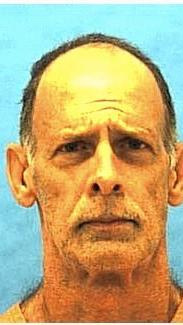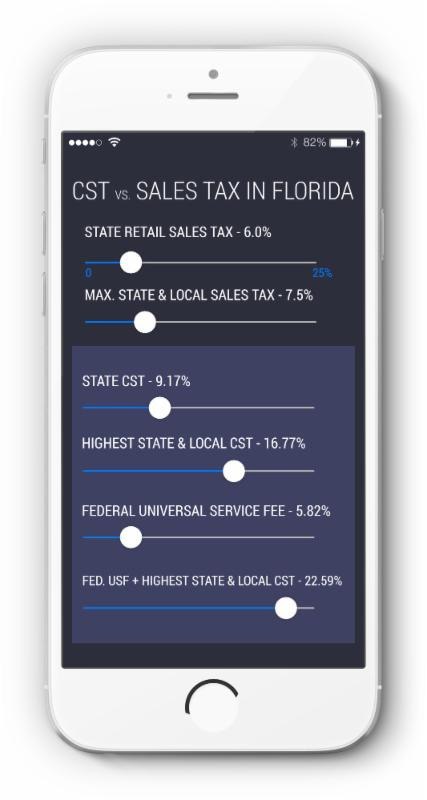Water Project Wishlist Includes $126K For Century, $26 Million in Escambia, Santa Rosa
February 18, 2015
Water-related projects totaling nearly $1.2 billion have been proposed as state lawmakers decide how to carve up a pot of money that voters want for land and water conservation and management.
The list of 475 requested water projects across the state includes almost $26.7 million in local projects in Escambia and Santa Rosa counties:
- Lime additional facilities at the Century wastewater treatment plant, $126,000.
- Flood improvement project for the Institute for Machine and Human Cognition, $550,000.
- Innerarity water and sewer upgrade in Escambia County, $1,020,000.
- Milton beneficial effluent reuse project, $349,115.
- East Milton water reclamation and effluent disposal facility, $15,000,000
- Santa Rosa County Navarre Beach wastewater treatment plant relocation, $9,650,000.
 The East Milton project is among the largest requests in the state, which range from $96.8 million for phase two of the Yankee Lake Surface Water Plant in Seminole County to $15,000 for the replacement of sewage flowmeters in Miami-Dade County.
The East Milton project is among the largest requests in the state, which range from $96.8 million for phase two of the Yankee Lake Surface Water Plant in Seminole County to $15,000 for the replacement of sewage flowmeters in Miami-Dade County.
The House Agriculture & Natural Resources Appropriations Subcommittee panel is working to define the intent of the ballot initiative, which was known as Amendment 1 and was approved by 75 percent of voters.
“There is going to be somebody, somewhere, that isn’t happy with the way the funds are distributed,” subcommittee Chairman Ben Albritton, R-Wauchula, said. “It’s going to happen, because there are so many people and so many perspectives.”
The amendment, which directs 33 percent of the proceeds from a real-estate tax to land and water projects, is expected to provide $757 million for the efforts during the fiscal year that starts July 1.
Jim Turner, The News Service of Florida, contributed to this report.
Molino Man Charged With Tom Thumb Robbery
February 18, 2015
A Molino man has been arrested for robbing a Tom Thumb on Saufley Field Road.
 Acoya Kenneth Wright, age 19, was charged with robbery with a firearm and committing a felony with a mask or hood.
Acoya Kenneth Wright, age 19, was charged with robbery with a firearm and committing a felony with a mask or hood.
According to the Escambia County Sheriff’s Office, Wright robbed the Tom Thumb at 5450 Saufley Field Road at 2:36 a.m. on February 5. He was reportedly wearing all-black clothing with his face concealed by a scarf and carrying a long item wrapped in black clothing in a manner that would indicate that it was rifle. He fled the store on foot with less than $40 in cash.
Wright was developed as a suspect in the crime after relatives contacted the Escambia County Sheriff’s Office with their suspicions.
When interviewed deputies, Wright said he was very drunk and had to be carried home the night of the robbery, therefore he was not responsible for the holdup, according to an arrest report.
Friends told investigators that Wright had been looking to trade his .22 rifle for a pistol because he planned on robbing the Tom Thumb because he needed $20,000 — $5,000 of which would be for his little sister to get braces and $12,000 for his little brother, the report states.
Wright remained in the Escambia County Jail Wednesday morning with bond set at $50,000.
Justices Halt Florida Execution Amid Questions About Lethal Injection Drug
February 18, 2015
Saying it must “err on the side of extreme caution” or risk threatening the “viability of Florida’s entire death penalty scheme,” the Florida Supreme Court on Tuesday halted the Feb. 26 execution of a convicted killer until the U.S. Supreme Court rules on a lethal injection drug.
 The U.S. Supreme Court has temporarily put on hold executions in Oklahoma while it considers whether a relatively new lethal-injection drug violates constitutional protections against cruel and unusual punishment.
The U.S. Supreme Court has temporarily put on hold executions in Oklahoma while it considers whether a relatively new lethal-injection drug violates constitutional protections against cruel and unusual punishment.
Because Florida’s lethal injection protocol is virtually identical to Oklahoma’s, the execution next week of Jerry William Correll needs to be delayed until the U.S. Supreme Court makes a decision, Florida Chief Justice Jorge Labarga wrote for the majority in a 5-2 decision Tuesday.
“Without a stay of execution in this case, Florida risks the unconstitutional execution of Correll, for which there is no remedy. In contrast, a stay pending determination of the issue in the United States Supreme Court will not prejudice the state and, more importantly, will ensure that Florida does not risk an unconstitutional execution, a risk that would threaten the viability of Florida’s entire death penalty scheme,” Labarga wrote. “For all these reasons — the most significant being the pending Supreme Court review of a protocol for which review had been denied in the past — this court must err on the side of extreme caution and grant a stay of execution for Correll.”
 The decision overturned a circuit judge’s order last week denying Correll — convicted for the 1985 stabbing deaths of his ex-wife, daughter and two others in Orlando — a stay of execution pending the U.S. Supreme Court decision.
The decision overturned a circuit judge’s order last week denying Correll — convicted for the 1985 stabbing deaths of his ex-wife, daughter and two others in Orlando — a stay of execution pending the U.S. Supreme Court decision.
In the Oklahoma case, the high court is considering arguments about whether the disputed drug, midazolam hydrochloride, does not effectively sedate inmates during the execution process and subjects them to pain that violates the U.S. Constitution’s Eighth Amendment ban on cruel and unusual punishment.
Florida and other states began using the sedative as the first step in a three-drug execution cocktail in 2013, after previously using a drug called pentobarbital sodium. The states switched because Danish-based manufacturer Lundbeck refused to sell pentobarbital sodium directly to corrections agencies for use in executions and ordered its distributors to also stop supplying the drug for lethal-injection purposes.
Correll filed an emergency petition with the Florida Supreme Court on Jan. 30, seeking a stay of his execution while the U.S Supreme Court considers the matter. The Florida court returned the case to Orange County Circuit Judge Jenifer Davis, who last week rejected Correll’s arguments. Gov. Rick Scott signed Correll’s death warrant earlier in January.
In ruling against Correll, Davis pointed to past Florida Supreme Court and federal-court decisions that upheld the use of midazolam hydrochloride.
But on Tuesday, Labarga wrote that, since the U.S. Supreme Court has put on hold executions in Oklahoma while considering the issue, Florida should do the same.
“‘Death is different,’” Labarga wrote, quoting from a previous U.S. Supreme Court decision.”When the execution of a death-sentenced individual is at issue, heightened care must be taken, and none more so than when, as here, the method of execution has a reasonable and realistic chance of being declared to be cruel and unusual punishment by the United States Supreme Court.”
But in a 10-page dissent, Justice Charles Canady argued that the Supreme Court temporarily halted Oklahoma executions because state officials there requested the stays. Canady also objected that, although the drug protocols are similar, a decision about the constitutionality of Oklahoma’s use of midazolam may not have any impact on Florida’s lethal injection process.
The Florida Supreme Court has repeatedly signed off on the use of the drug in previous cases, Canady, joined by Justice Ricky Polston, wrote.
“This court has reviewed an exhaustive amount of litigation in a number of cases regarding the efficacy of midazolam in Florida’s lethal injection protocol, and we have not had concerns about its ability to produce an execution that comports with the Eighth Amendment. Perhaps the Supreme Court is concerned with the ‘botched’ executions of Dennis McGuire in Ohio, Joseph Wood in Arizona, and Clayton Lockett in Oklahoma; but none of those executions used midazolam in the same manner or dosage as it is used in Florida’s protocol,” he wrote.
by Dara Kam, The News Service of Florida
Florida TaxWatch Supports Cable, Cell Phone Tax Cuts
February 18, 2015
Easing the tax burden for Florida families and businesses would also attract business investment, create Florida jobs and grow the state’s information-based economy, according the latest Florida TaxWatch Economic Commentary. The report highlights the state’s Communications Services Tax, which is the fourth highest in the nation.
The Communications Services Tax is levied on cell phone, cable and satellite television and non-residential landline phone service, and can be as high as 22.59 percent for Floridians. The tax differs across the state, and is comprised of a standard federal fee, a uniform statewide tax and a varying local tax.
However, Florida taxpayers may soon have lower bills if the Governor’s proposal to reduce the state’s communications services tax is accepted by the Legislature. Governor Rick Scott plans to reduce the state portion of the tax to 5.57 percent from 9.17 percent. The 3.6 percent reduction would result in $470.9 million in annual savings for taxpayers.
“I applaud the Governor for his leadership and commitment to reducing taxes for all Floridians, especially those families, seniors and residents on very modest incomes,” said Dominic M. Calabro, President and CEO of Florida TaxWatch. “For years we have recommended that the Legislature reduce this highly burdensome and regressive tax on consumers and businesses. Florida’s unfairly high Communications Services Tax is punitive and makes the state less attractive to businesses the state is trying to recruit to provide high-skill, high-wage jobs to its residents.”
The Communications Services Tax is more than twice the highest state and local general sales tax rate in Florida. This year, it is expected to bring more than $2.1 billion in revenue to Florida’s state and local governments.
Orientation Workshop Set For Century Business Challenge
February 18, 2015
The University of West Florida Haas Center and the Florida SBDC at UWF have set dates for orientation and workshops for the upcoming Century Business Challenge.
The business challenge is a business plan competition in which the winning company will receive a prize package valued at more than $25,000. The Pensacola-based Studer Institute and the Haas Center are sponsoring the competition in partnership with the Florida SBDC at UWF, which is providing business planning software and conducting orientation and workshop sessions for participants.
 “I am very excited about our involvement with the Century Business Challenge,” said Kelly Massey, regional director of the Florida SBDC at UWF. “Growth business consultant Carl Quesinberry is leading our team on this project. We have assisted competitors in many business plan competitions before.”
“I am very excited about our involvement with the Century Business Challenge,” said Kelly Massey, regional director of the Florida SBDC at UWF. “Growth business consultant Carl Quesinberry is leading our team on this project. We have assisted competitors in many business plan competitions before.”
The first orientation session will be open to the public on Tuesday, March 3 at 6 p.m. at the Century Community Center on West Highway 4 at Industrial Boulevard. The meeting is an orientation for anyone wising to compete in the Century Business Challenge.
The next public meeting will be a business concept workshop on Tuesday, March 17. Additional workshops, closed to the public, will be held for participants on April 7, 8 and 9.
“The Florida SBDC and UWF are seeking to make our services more convenient and accessible for those in Century and the surrounding area,” Massey said. “We will provide three training sessions and mentoring services for the competitors at no cost. The Century Business Challenge is a win for everyone.”
Those interested in participating in the business challenge must apply by the end of March. Applications and more information about the business challenge can be found at its website, www.CenturyBusinessChallenge.com.
Prizes for the winner of the Century Business Challenge include space at the Century Business Center on Pond Street at a lease rate of $1 per year, with the possibility of an extension of that rate for two more years based on the company’s performance.
Pensacola philanthropists Quint and Rishy Studer will donate $25,000 in financial support to the winner of the competition.
The Century Business Challenge is part of an economic development partnership of the Haas Center, the Town of Century and the Studer Institute.
Those interested in attending orientation or the workshops are encouraged to RSVP by emailing Allison Tyler at atyler1@uwf.edu
Private Applicator Pesticide License Class To Be Held In Walnut Hill
February 18, 2015
A class to obtain a Private Applicator Pesticide License will be held February 25 at the Walnut Hill Community Center.
Attendees will learn the basics of applying pesticides correctly and will be able to take the exams necessary to become certified private applicators (Applicator and Core) by FDACS. The class will be 9:00 a.m. to 3:30 p.m. with a cost of$10 per person including lunch.
Northview Chiefs Fall In Regional Semifinals
February 18, 2015
 The Northview High School basketball team’s dreams of a championship trophy came to an end Tuesday night, just three games shy of a 1A state title.
The Northview High School basketball team’s dreams of a championship trophy came to an end Tuesday night, just three games shy of a 1A state title.
On the road in Quincy, the Northview Chiefs lost to West Gadsden 74-44 in the regional semifinals. West Gadsden will advance to the regional finals against Chipley; the Chipley Tigers defeated Franklin County of Eastpoint 85-46 Tuesday.
Century Fire Contained To Home’s Chimney
February 18, 2015
Firefighters from multiple stations responded to a reported house fire near Century Tuesday night.
 The fire was reportedly extinguished quickly and contained to a chimney of the 2300 square foot brick veneer home in the 600 block of Tedder Road, near Elsie Davis Road. There were no injuries reported.
The fire was reportedly extinguished quickly and contained to a chimney of the 2300 square foot brick veneer home in the 600 block of Tedder Road, near Elsie Davis Road. There were no injuries reported.
The Century, McDavid and Walnut Hill stations of Escambia Fire Rescue and the Flomaton Volunteer Fire Department were dispatched to the incident.
Hit And Run Crashes On The Increase
February 18, 2015
Florida has experienced an alarming increase in the number of fatal hit and run crashes during the last two years, and law enforcement agencies are teaming up to spread the word that fleeing the scene of an accident can result in tougher penalties.
 “There were more than 80,000 hit and run crashes in Florida last year, a seven percent increase from 2013. Leaving the scene makes the situation worse, not only for those who flee, but even more so for the victims left behind,” said DHSMV Executive Director Terry L. Rhodes. “It is crucial that all individuals involved in a crash, including witnesses to a crash, contact 911 and remain at the scene until help arrives. Every life matters and every second counts.”
“There were more than 80,000 hit and run crashes in Florida last year, a seven percent increase from 2013. Leaving the scene makes the situation worse, not only for those who flee, but even more so for the victims left behind,” said DHSMV Executive Director Terry L. Rhodes. “It is crucial that all individuals involved in a crash, including witnesses to a crash, contact 911 and remain at the scene until help arrives. Every life matters and every second counts.”
There were 4,848 hit and run crashes in Escambia and Santa Rosa counties during a three year period with 14 resulting fatalities. During 2015, there have been two fatal hit and run crashes involving pedestrians in Escambia County.
What to do after a crash, according to FHP:
- CALL law enforcement.
- REMAIN calm.
- ATTAIN vehicle, witness and driver information.
- SKETCH the scene, showing vehicle crash locations.
- HELP the injured.
A few hit and run facts for Florida:
- Hit and run crashes involving fatalities increased 23 percent from 2013 to 2014.
- Forty-six counties saw an increase in hit and runs from 2013 to 2014.
- The number of hit and run crashes statewide has increased seven percent from 2013 to 2014.
- Nearly half of the hit and run fatalities in 2014 were pedestrians, a 17 percent increase from 2013.
- Twenty-five percent of all crashes are hit and run crashes.
What does Florida law say?
As of July 2014, with the enactment of the Aaron Cohen Life Protection Act, consequences of leaving the scene of a crash have been enhanced. The Act:
- Punishes leaving the scene of a crash resulting in serious bodily injury to a person as a second degree felony, rather than a third degree felony.
- Imposes a mandatory minimum term of imprisonment of four years for a driver convicted of leaving the scene of a crash resulting in the death of a person.
- Increases the mandatory minimum term of imprisonment from two to four years for a driver convicted of leaving the scene of a crash resulting in the death of a person while driving under the influence (DUI).
- Imposes a minimum driver license revocation period of at least three years, and driver education requirements for leaving the scene of a crash.
- Ranks offenses for leaving the scene of a crash one level higher than specified in the Criminal Punishment Code if the victim of the offense was a “vulnerable road user” (such as a pedestrian, a bicyclist or a motorcyclist).
James Thomas “Morris” Luker
February 18, 2015
James Thomas “Morris” Luker 96, born and raised around Atmore, passed away Monday, February 16, 2015, in Aberdeen, MS. He was born on June 1, 1918.
He is preceded in death by his parents, Tom and Arcola Luker; and siblings, Perry,Robert, Gladys, O’Neal, George, Melvin, Freddie, and Lillian.
He is survived by numerous nieces and nephews.
Services will be Thursday, February 19, 2015, at 1 p.m. from the Johnson-Quimby Funeral Home Chapel with Rev. C.L. Langford officiating.
Interment will follow in Oak Hill Cemetery.
His nephews will be pallbearers.
Johnson-Quimby Funeral Home is in charge of all arrangements.


